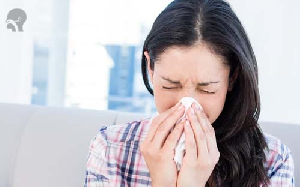
The coronavirus disease 2019 (COVIDâ€19) pandemic is affecting millions of people worldwide with no current signs of abatement; manifestation of illness in those infected with the virus varies widely, from asymptomatic requiring no treatment to very severe complications requiring mechanical ventilation support. Initially, the virus was thought to primarily effect the pulmonary system alone, but later it was recognized that the virus can impact multiple organ systems also. Nevertheless, those who are physically fit and possess a healthy living phenotype are less severely affected by the disease than those with preâ€existing coâ€morbid conditions and hence having less morbidity and mortality. The recovery rate of COVIDâ€19 is improving with time due to better insight of the disease and available treatment options and hence, the number of survivors is increasing. During the recovery period, it has been reported that even patients with symptoms as a result of the viral infection continue to experience dyspnoea, chest pain and fatigue; these symptoms have been shown to persist for weeks following acute recovery. In patients recovering from a more severe manifestation of the viral infection, severe morbidity and low quality of life persist.
Pulmonary rehabilitation (PR) has the potential to play a vital role in the recovery of patients infected with severe acute respiratory syndrome coronavirus 2 (SARSâ€CoVâ€2). However, the traditional approach to PR is not conducive to the healthcare environment in the COVIDâ€19 era. In this context, the approach must be modified from the perspective of both the rehabilitation programme employed as well as a focus on minimizing the possibility of viral spread by transferring the patients to the government or communityâ€designated isolation centres. In this pandemic era, the multidisciplinary role by members is crucial with primary role of the members being to reâ€enforce the PR plan for COVIDâ€19 and provide awareness, education and support whenever required. Telerehabilitation is an important component of PR in this environment as it allows access to patients who would benefit while minimizing humanâ€toâ€human contact. During faceâ€toâ€face treatment, healthcare professionals should employ techniques that require minimal manual handling of patients, such as remoteâ€controlled mechanical tilting beds, mechanical assisted limb exercisers and closedâ€circuit suctioning. In the immediate postâ€recovery period, patients must remain in isolation for at least 2 weeks before enrolling for supervised PR programme. During this isolation phase, patients should be advised to perform lowâ€toâ€moderate intensity exercises as per individual capabilities or using selfâ€perceived exertion scales which can be easily administered from remote centres. Following the selfâ€isolation phase, exercise testing and prescription need to be assessed under strict protocols to minimize viral spread; properly ventilated rooms and sanitization of rehabilitation settings are essential components. Proper nutritional counselling and psychological rehabilitation are also important components of PR that should be included. Table  lists a proposed modified approach to PR for the COVIDâ€19 era. The authors of this correspondence hope that readers will find this proposed approach to be of value when considering how to alter the approach to PR.














